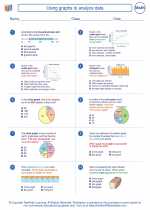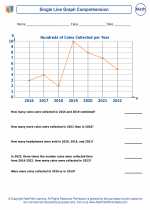Visual Patterns Study Guide
What are Visual Patterns?
Visual patterns are sequences of shapes, colors, or objects that follow a specific rule or pattern. These patterns can be represented visually and can be found in various contexts, such as art, design, and mathematics.
Identifying and Extending Visual Patterns
When working with visual patterns, it's important to be able to identify the core elements of the pattern and extend it to predict future elements. This often involves recognizing the repetition or progression of certain characteristics within the pattern.
Types of Visual Patterns
Visual patterns can come in different forms, such as geometric patterns, color patterns, and object patterns. Geometric patterns involve shapes and spatial arrangements, while color patterns focus on the repetition and variation of colors. Object patterns can involve the repetition of objects or images in a specific sequence.
Mathematical Applications
In mathematics, visual patterns are often used to introduce and reinforce concepts related to algebra, geometry, and pattern recognition. Understanding visual patterns can help develop critical thinking skills and problem-solving abilities.
Strategies for Analyzing Visual Patterns
When analyzing visual patterns, it can be helpful to look for symmetry, repetition, and the relationship between consecutive elements. Additionally, using tables, diagrams, or charts can aid in organizing and visualizing the pattern's structure.
Practice Questions
1. Identify the core elements of the following visual pattern and predict the next three elements:

2. Describe the type of pattern (geometric, color, object) represented in the following sequence:

3. Create your own visual pattern using geometric shapes and explain the rule or pattern it follows.
Conclusion
Visual patterns are a fundamental aspect of mathematics and can be found in numerous real-world applications. By practicing and analyzing visual patterns, students can enhance their pattern recognition skills and develop a deeper understanding of mathematical concepts.
.◂Math Worksheets and Study Guides Eighth Grade. Using graphs to analyze data

 Worksheet/Answer key
Worksheet/Answer key
 Worksheet/Answer key
Worksheet/Answer key
 Worksheet/Answer key
Worksheet/Answer key
 Worksheet/Answer key
Worksheet/Answer key
 Worksheet/Answer key
Worksheet/Answer key
 Worksheet/Answer key
Worksheet/Answer key
 Worksheet/Answer key
Worksheet/Answer key
